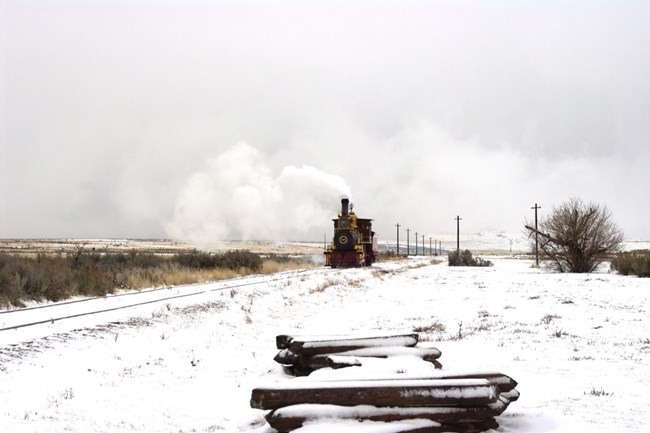Learn about NRCAs
The Natural Resource Condition Assessment (NRCA) Program provides framework, funding, and publishing support to parks to aid in the synthesis and documentation of natural resource conditions. Condition assessment reports are a tool to describe selected park resources, and record a snapshot of their current condition, identify trends, and identify potential or current threats and stressors. Understanding the condition and trend of natural resources is key for parks and NPS planners to appropriately prioritize and allocate stewardship resources.

NPS photo
Traditional NRCA Report: 2018
The Natural Resource Condition Assessment for Golden Spike National Historic Site was published in 2018, in order to better understand the condition and processes of natural resources within the site. This assessment was conducted by NPS staff, Utah State University, and the Colorado Plateau Cooperative Ecosystem Studies Unit. This team chose ten focal resources to evaluate, which comprised the natural resources and processes that were of greatest interest or concern to park staff at the time of the effort:
- Viewshed |
||
- Night sky |
||
- Soundscape |
||
- Air quality |
||
- Vegetation communities |
||
- Passey's onion |
||
- Non-native plants |
||
- Birds |
||
- Mammals |
||
- Hepetofauna |
Based on the assessment, viewshed was given a good condition status, night sky condition was of moderate concern, four other resource conditions were of significant concern (soundscape, air quality, vegetation communities, and non-native plants), and the remaining four (Passey’s onion, birds, mammals, and herpetofauna) were not given a condition status, due to lack of current data. As Golden Spike National Historic Site managers try to formulate cultural and natural conservation goals in the midst of rapidly changing conditions, access to scientifically credible information to help inform management actions will be extremely beneficial. Evidence-based information will help to communicate the complex climate change effects and impacts to the public and site staff, especially since all aspects of the natural and cultural resources, operations, and visitor experiences will likely be affected.
For other reports and natural resource datasets visit the NPS Data Store.
Source: NPS DataStore Collection 7765 (results presented are a subset). To search for additional information, visit the NPS DataStore.
Last updated: August 16, 2022
